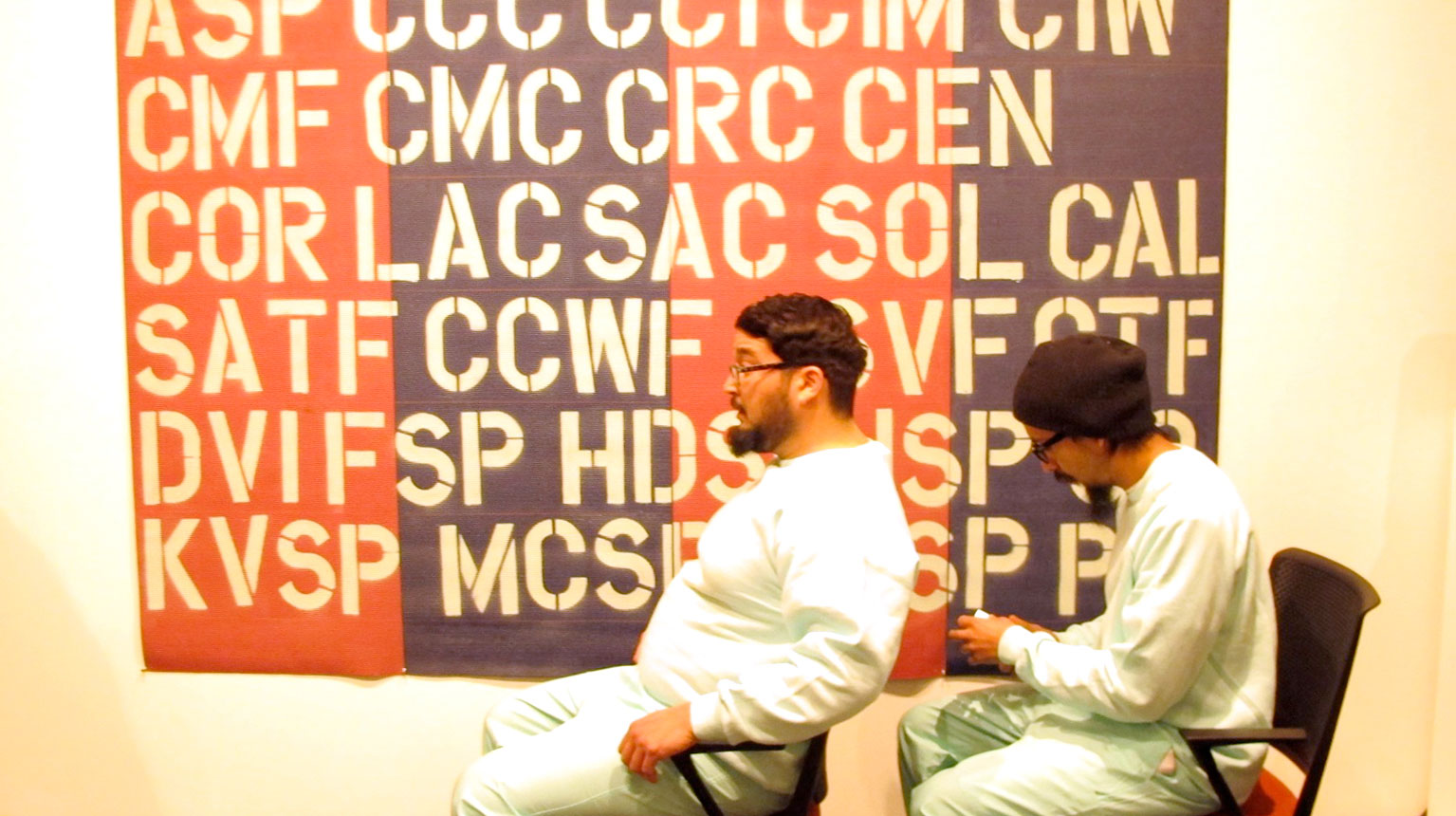The moment the elevator of the Vincent Price Art Museum opens onto the second floor, one is immediately confronted with artist Matt MacFarland’s cartoon sandwich boards, part of a body of work called Steakation (2012). The nearest one depicts a heart-shaped steak with face, arms and legs proclaiming, “I want to be inside you!”—A rather forward sentiment, not to mention a graphic one. Mental images of red meat consumption are instantly conjured, seasoned with the uncomfortable psychological intimacy of a wide-eyed cartoon character who wants to enter your digestive system. The experience is funny, grotesque, highly physical and disturbingly mixed in its messages.
After walking through the entire MexiCali Biennial exhibition, packed enthusiastically into a single large gallery, it becomes apparent just how apt of an opening line the sandwich board is. The 2013 edition of the seven-year-old exhibition series is built around the historically loaded theme of cannibalism—which, as the curators note, was one of the rationales for colonialism in the New World—and is filled with works referencing food, consumption, sacrifice, violence, trafficking, appropriation and conquest. The show, whose subject matter boils down to the strange detritus and occurrences that erupt out of cross-cultural pollination, succeeds in getting under one’s skin; its effects are tactile and visceral, sometimes literally so, as many of the artworks are interactive and invite touch. There is a sense of much being at stake, but at the same time, an infectious humor is maintained.
Judging from accounts provided by helpful museum staff, Latin American border issues were especially highlighted by performances that occurred at the raucous opening reception. At the gallery’s entrance, artist Sergio Bromberg had installed an untitled contraption that mimicked the recording devices commonly found at border checkpoints; a “guard” ordered everyone entering the exhibition to submit to having their photo and fingerprints taken. Inside the gallery, Dino Dinco and Rafa Esparza served Paletas de Sangre (blood popsicles) out of a real Mexican ice cream cart. The popsicles were actually hibiscus flavored and made by the popular company formerly known as La Michoacana, which had to change its name in order to distance itself from the notorious drug cartel, La Familia Michoacana. This interactive work, which made for many bloody-looking mouths that night, is a clever metaphor for the violence of border commerce.
Other works in the exhibition evoke in less direct ways the strange mutations, or sense of not belonging, that can occur when mismatched phenomena collide with one other. Matthew Carter’s intriguing Five Stacks of Death, Dread and Darkness (2012) is a gooey black sculpture that attempts to capture in material form a catch phrase from the reality show Ghost Adventures. Christopher Reynolds offers an eccentric series of works addressing food consumption—among them, Appetite Apparatus #1 (2011), an understated sculpture that proposes, via chromatherapy, to suppress the viewer’s appetite through deployment of the color Baker-Miller pink.
There is also a sense in the exhibition of bodies literally moving through space, across zones of determinacy. Nancy Popp’s Untitled (Street Performance), Concept Drawing (2013) is a photograph of a building under construction in Mexicali that is stitched through by the artist with thread to trace her proposed bodily movements in a future action. On the grittier side, The People Movers (2012) by Fred Alvarado records the artist’s travels through California via jumpy video footage, coloring books depicting the state’s prisons and yoga mats spray painted with all of the prisons’ acronyms.
There are times when the exhibition seems excessive. In one section of the gallery are crammed Juan Bastardo’s Guess Who’s Coming to Dinner (2012), Natalia Anciso’s Platicando con las Comadres (Chatting with the Gossips) (2012), and Reynolds’ The Pleasure of the Table (2012), all within yards of one another. Despite the theme of the biennial, there are an awful lot of overly-dramatic, dinner-referencing installations for one exhibition. Similarly, Marycarmen Arroyo Macias’ harrowing Tomad y Comed (Take and Eat) (2012), in which the holy communion phrase is spelled out in pig’s blood on the wall, is right around the corner from the blood popsicle cart. Still, one can’t deny the delicate beauty of Anciso’s piece, which weaves drawings of border arrests and other sad situations into the soothing comfort of domestic decorations, or the succinct effectiveness of Macias’ virtual scream of protest against unsustainable growth. And perhaps it could be said that such histrionics are warranted—both as an accurate reflection of the vivid subject matter and as a curious means of force-feeding its effects to viewers, making us, in the end, the ultimate cannibals.
MexiCali Biennial 2013 runs through April 13; info at vincentpricemuseum.org; all images courtesy Mexicali Biennial 2013




